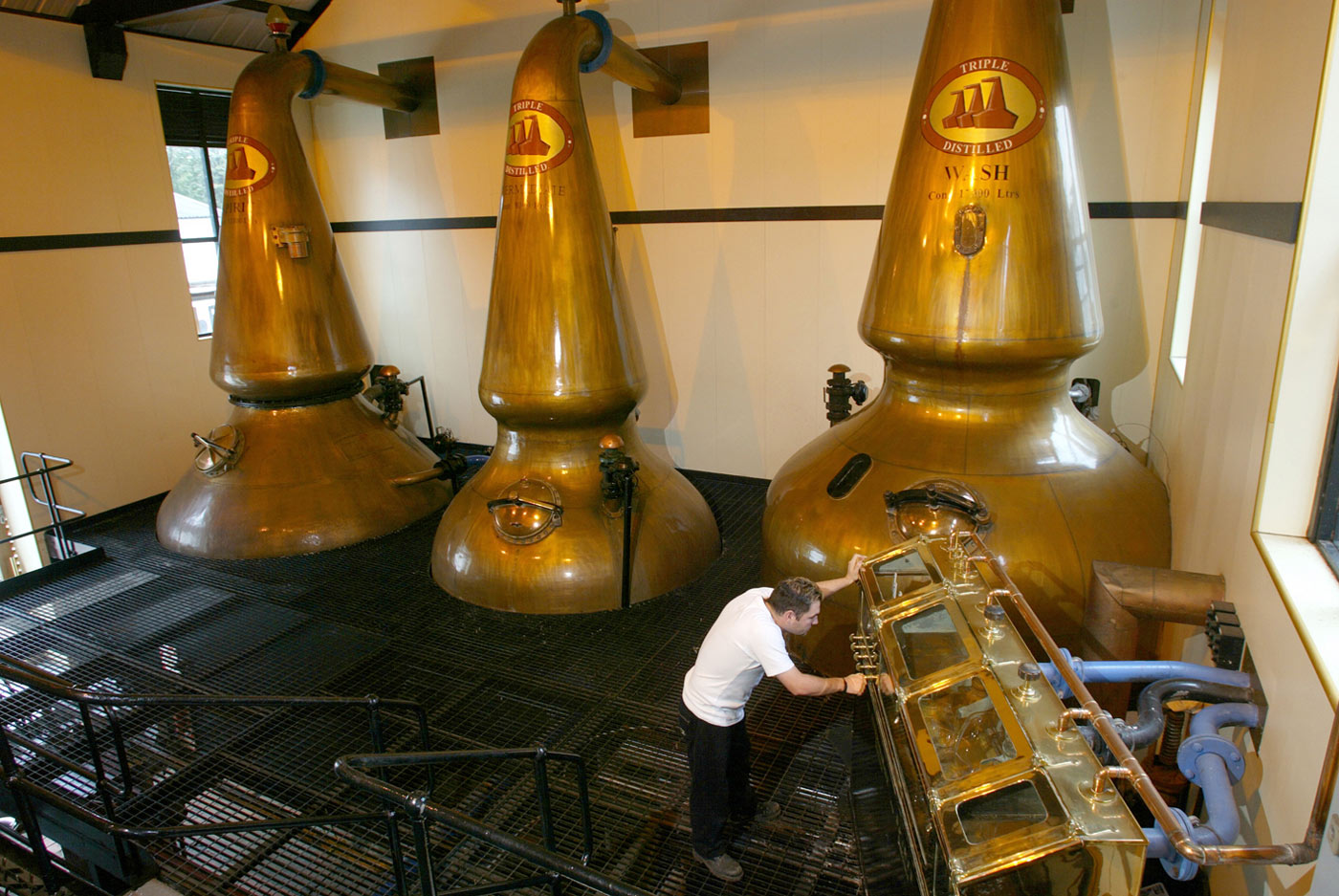September Scotch: Three Times Distilled Auchentoshan Single Malts
How the process affects flavor, and why it’s OK to use this whisky in cocktails

The distillery for single malt Scotch brand Auchentoshan (pronounced “AWK-EN-TOSH-EN”) can be considered geographically distinct for an uncommon reason. Yes, it’s a Lowland Scotch (as opposed to the Highland and Islay whiskies we’ve thus far explored in our September Scotch series), but more importantly it’s produced on the outskirts of a massive city, namely Scotland’s largest: Glasgow. The distillery origins date back to 1823, but the facility was entirely re-built in 1969. Like most Scotch brands and their distilleries, Auchentoshan has changed hands many times but one thing holds true, perhaps now more than ever; there’s an accessible sweetness to most of the brand’s whiskies that make it a great entryway into the product category. It’s also unpeated, so no smoke here. Altogether, this makes it ideal for Scotch-based cocktails. The best way to purchase a bottle of single malt Scotch is to have an understanding of what you are getting, what it will taste like and what can be done with it. Auchentoshan is an easy one to place.

On the production front, the brand draws substantial attention for the fact that they’re triple-distilled. Most whiskies are twice distilled. A lot of other spirits categories (vodka, in particular) talk of the benefits of triple-distillation. Auchentoshan is the only brand to do so three times in the whisky world—and this is thanks to a third copper still in their process known as the intermediate. The triple-distillation means a portion of their un-aged liquid comes out at a substantially higher proof—more impurities have been filtered out, a more reactive spirit is ready to be aged. A third distillation is time-consuming and expensive, but you can’t make good whisky without good distillate, and this process already sets Auchentoshan apart.

For aging, Auchentoshan employs four different barrel categories—including American oak and Spanish sherry casks. Wood is very important to whisky, and this is the portion of production that imparts most flavor. But it’s best to look at wood use by way of the brand’s core product range. The brand does have a stellar array of limited edition whiskies, as well as some available only in the travel retail markets, but the five expressions in their permanent collection warrant more attention. There are three age statement products in the core range: the relatively standard 12, 18 and 21 years old. All three carry the same essence of honey and vanilla with tinges of citrus, but as the ages rise the spirit grows more complex and nuanced. The 21 also incorporates aging in Spanish sherry casks, so there’s a jammy richness and a lengthy finish.
As an entry-level product, the American Oak expression ($40) acts as an ideal introduction to the brand—and will resonate with bourbon drinkers. The name reveals what one can expect: vanilla and caramel up front. A brevity runs throughout, locked down with a crisp finish. It’s definitely good, and most will find it to be one of the easiest single malt Scotch expressions to consume. The standout from the range, however, is the Three Wood ($70). As is implied, the spirit within the Three Wood has been aged in three different types of barrels. American oak has been used, offering the expression a toffee and butter taste. Oloroso sherry casks are also used, maximizing cinnamon and dried fruit notes. And finally, Pedro Ximenez Sherry casks lend the ultimate complexity, blending sweetness and winter spice with a bouquet of fruit. It’s a Scotch that unfolds with each sip.

Many Scotch brands shy away from the idea of mixing their products into cocktails, with the frequent debate being one of three options: neat, with water or on the rocks. While we don’t recommend going out and buying a bottle of Auchentoshan 21 to mix with Dr Pepper, not only are a lot of these expressions good for classics like the Rob Roy, but the brand is presently on a quest to encourage people to have it used in beer cocktails. The Auchentoshan + Ale program, co-developed with beer master Pat Fahey, contains an array of three component cocktails—Scotch and beer being two of the three. The implication here is that Auchentoshan is not pretentious. And, we’ve already observed it holding up against Pilsners, Belgian wheats and Porters. The cocktail picture above actually contains 1.5 parts Auchentoshan Triple wood to four parts Porter Ale, with .5 parts chili liqueur (all shaken together). Known as the Beer + Loathing, it’s exquisite.

Access and versatility define Auchentoshan. These virtues make it accessible to novices and collectors, alike. Whereas most regions in Scotland have an abundance of distilleries, the Lowlands have only six. And there is a Lowland flavor at play here. It manifests in the spirits’ lightness and ease. So while it’s is a great sipper (especially for beginners), it’s also a bartending favorite.
Images courtesy of Auchentoshan












